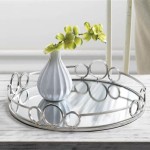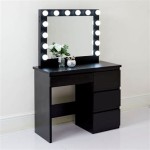Antique Dresser Mirror Replacement
Replacing a broken or missing mirror on an antique dresser requires careful consideration and execution to preserve the piece's historical integrity and value. While a new mirror can restore the dresser's functionality, it’s crucial to approach the replacement process with sensitivity to the original design and craftsmanship.
Assessing the Damage and Original Mirror
Before seeking a replacement, thoroughly examine the existing mirror frame and any remaining fragments of the original mirror. Note the mirror's dimensions, thickness, and any beveling or special edging. Documenting these details, including taking photographs, will be invaluable when searching for a replacement or consulting with a professional. Assess the condition of the frame itself, looking for any damage or instability that may need addressing before a new mirror is installed.
Sourcing a Replacement Mirror
Several options exist for obtaining a replacement mirror. One can source antique mirrors from salvage yards, antique shops, or online marketplaces. This option offers the possibility of finding a mirror with a similar age and style to the original, potentially enhancing the dresser's authenticity. However, finding an exact match can be challenging and time-consuming. Alternatively, a modern mirror can be custom-cut to fit the existing frame. This offers greater control over the mirror's specifications, ensuring a precise fit.
Choosing the Right Glass Type
Modern mirrors are typically made with float glass, a process that results in a very flat and uniform surface. Antique mirrors were often made using different methods, resulting in subtle imperfections and distortions that contribute to their character. When choosing a replacement, consider the overall aesthetic of the dresser. A modern, perfectly flat mirror might look out of place on a piece with ornate carvings and aged wood. Specialty glass manufacturers can create mirrors with antique-style qualities, such as waviness or a slightly aged appearance, which can help the new mirror blend seamlessly with the antique dresser.
Working with a Professional
Replacing an antique dresser mirror can be a complex undertaking, particularly if the frame is fragile or intricately designed. Consulting with a professional furniture restorer or experienced glazier is advisable, especially for valuable or historically significant pieces. These professionals possess the expertise to handle antique materials and can ensure the replacement mirror is installed securely and sympathetically to the original design. They can also advise on appropriate glass types and restoration techniques for the frame itself.
Measuring for the Replacement
Accurate measurements are essential for a successful mirror replacement. Carefully measure the opening in the frame where the mirror will sit. Take multiple measurements at different points to account for any irregularities in the frame. If working with a professional, providing these measurements will ensure they can create a perfectly fitting replacement. When measuring, it's crucial to account for any clips, brackets, or other hardware that will be used to secure the mirror in place.
Installing the New Mirror
The installation process will depend on the design of the frame and the type of mirror being used. Traditional methods often involve using wooden cleats or metal clips to hold the mirror in place. Modern adhesives can also be used, but caution is advised as some adhesives can damage antique finishes. If working with a professional, they will use appropriate installation techniques to ensure the mirror is secure and the dresser's integrity is maintained. If undertaking the installation independently, thorough research and careful execution are vital.
Preserving Original Mirror Pieces
If the original mirror is broken, retain any fragments, even small ones. These pieces serve as valuable references for the replacement process and can be helpful for future restoration efforts. They offer insights into the original mirror's thickness, beveling, and any unique characteristics. Store the fragments safely in a padded container to prevent further damage.
Replacing an antique dresser mirror requires meticulous attention to detail and a respect for the piece's history. By carefully considering the options and taking appropriate steps, one can restore the dresser's functionality and beauty while preserving its antique character for future generations.

Antique Wooden Dresser Chest Or Wash Stand Mirror Replacement 16 X 13

Heavy Duty Dresser Mirror Support Brackets Made In The Usa

Dresser Set Mirrors Harriete Estel Berman

Dresser Set Mirrors Harriete Estel Berman

How Can I Raise The Height Of Mirror On This Vintage Dresser Hometalk

Vintage Dresser With Mia Mirror Salvaged Inspirations

Vintage Dresser With Mia Mirror Salvaged Inspirations

An Antique Mirror What You Need To Know The Honeycomb Home

Dresser Mirror Brackets September 2024 Your Guide

How To Antique Furniture In Two Easy Steps Using A Toner








